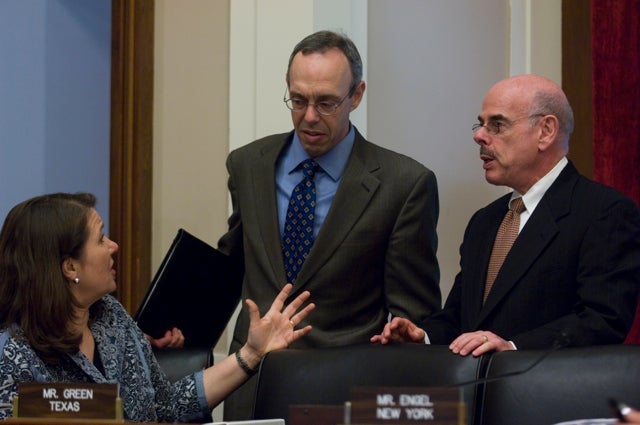Green Energy Backers Unwittingly Undermine Case for Federal ‘Investment’
Lachlan Markay /
Democrats determined to shield the administration from accusations of political cronyism are unwittingly undermining the larger policy vision that they themselves have supported, and the president has championed: the so-called “green energy economy.”
Reps. Henry Waxman (D-CA) and Diana Degette (D-CO), ranking Democrats on the House Energy and Commerce Committee and its investigative sub-panel, respectively, have released a trove of emails between administration officials regarding their support and financing for bankrupt solar company Solyndra. Their goal is to counter Republican suggestions that Solyndra received favorable treatment due to its investors’ political contributions.
But in doing so, Waxman and Degette are revealing that the defects in the Solyndra loan were features, not bugs, of its parent Energy Department loan program. If there was no malfeasance on the federal government’s part, then all of its actions can be fairly presented as the program’s normal workings.
The latest document dump from Waxman and Degette reveals that Solyndra was banking on additional support from the federal government, whether in the form of another loan guarantee of nearly the same size, or a cap and trade bill from Congress. When neither of these solutions came about, the company collapsed.
Solyndra was hoping that Congress could pass an energy bill that would mandate a certain level of “green” energy production, National Journal reported Thursday. In emails released by Energy and Commerce, executives said they had hoped for “a renewable energy standard to ensure adequate U.S. market size.” That market world, of course, drive business to Solyndra and other solar companies.
The company was also pursuing more direct means for federal aid. The Washington Post reported Wednesday that a number of the emails showed that DOE “was still considering providing [a] second loan guarantee to the solar-panel manufacturer in April and May 2010, at a time when Solyndra’s auditors were already warning that the company was in danger of collapsing.” That loan guarantee totaled $469 million.
These emails paint a picture of a company that could not survive without repeated government intervention. Whether through federal mandates for their product or direct financing from the government, Solyndra needed another federal intervention to sustain operations.
Congressional Democrats’ quest to inoculate the administration from any allegations of wrongdoing seems to imply that such an arrangement between Solyndra and the federal government was wholly ordinary. And indeed, that has been the administration’s and its allies’ mantra on green jobs: government financing is needed precisely because its beneficiaries could not survive without it.
“The government needs to stop trying to pick winners and losers in the marketplace,” write Nick Loris and Jack Spencer in a new Heritage research paper on the flawed idea of “green bank” to provide loan guarantees.
The importance of green energy aside, supporters of the program seem to be throwing the federal government’s weight behind unprofitable and excessively risky companies precisely because they are unprofitable and excessively risky. That is not an investment model likely to provide a sustainable rate of return. The president’s protestations notwithstanding, such a program will by its nature levy greater costs on investors – in this case, taxpayers – than a financing mechanism driven by the pursuit of profit.

